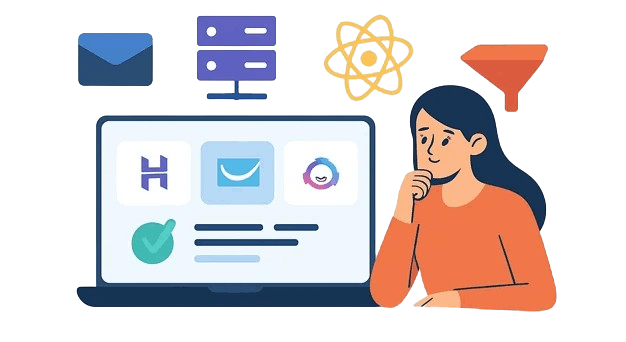EDPS Course Curriculum Overview for Beginners In India. Entrepreneurship Development Programs (EDPs) are designed to equip aspiring entrepreneurs with the necessary skills, knowledge, and mindset to successfully start and manage their own businesses.
As the global economy continues to evolve, the importance of fostering entrepreneurship has never been more critical.
This comprehensive guide will provide an in-depth overview of the EDP course curriculum, focusing on its structure, key components, and the skills it aims to develop in participants.
What is an Entrepreneurship Development Program (EDP)?
An Entrepreneurship Development Program (EDP) is a structured training initiative aimed at nurturing entrepreneurial skills among individuals.
These programs typically target unemployed youth, women, and marginalized groups, providing them with the tools and resources needed to establish and run their own businesses. The primary objectives of EDPs include:
- Motivating individuals to pursue entrepreneurship as a viable career option.
- Equipping participants with essential business skills, including planning, management, and marketing.
- Fostering innovation and creativity in developing business ideas.
- Providing networking opportunities with industry experts, mentors, and potential investors.
Importance of EDPs.
EDPs play a vital role in promoting entrepreneurship, which is essential for economic development. By empowering individuals to become self-employed, these programs contribute to job creation, income generation, and overall economic growth. Furthermore, EDPs help cultivate a culture of entrepreneurship, encouraging innovation and competition in the marketplace.
Structure of the EDP Curriculum.
The curriculum of an EDP is typically divided into several phases, each focusing on different aspects of entrepreneurship. The following sections outline the key components of a typical EDP curriculum.
Phase 1: Pre-Training Phase.
The pre-training phase involves preparing participants for the upcoming training program. Key activities during this phase include:
- Selection of Participants: Identifying and selecting individuals with the potential for entrepreneurship.
- Infrastructure Setup: Ensuring that the necessary facilities and resources are in place for effective training.
- Awareness Campaigns: Promoting the program to attract participants and generate interest.
Phase 2: Training Phase.
The training phase is the core of the EDP curriculum, where participants engage in various learning activities. This phase typically covers the following modules:
1. Introduction to Entrepreneurship.
- Understanding the concept of entrepreneurship and its significance in the economy.
- Differentiating between self-employment and wage employment.
- Exploring the characteristics and traits of successful entrepreneurs.
2. Business Planning and Development.
- Learning how to identify and evaluate business opportunities.
- Developing a comprehensive business plan, including market analysis, financial projections, and operational strategies.
- Understanding the importance of feasibility studies and risk assessment.
3. Financial Management.
- Gaining knowledge of basic accounting principles and financial statements.
- Learning about budgeting, cash flow management, and working capital requirements.
- Exploring funding options, including loans, grants, and venture capital.
4. Marketing and Sales Strategies.
- Understanding market research and customer segmentation.
- Developing effective marketing strategies, including branding, advertising, and digital marketing.
- Learning sales techniques and customer relationship management.
5. Legal and Regulatory Framework.
- Familiarizing participants with the legal aspects of starting and running a business.
- Understanding the various licenses and permits required for different types of businesses.
- Exploring intellectual property rights and their importance for entrepreneurs.
6. Human Resource Management.
- Learning about the importance of human resources in business success.
- Understanding recruitment, training, and employee management.
- Exploring team dynamics and leadership skills.
7. Technology and Innovation.
- Emphasizing the role of technology in modern entrepreneurship.
- Encouraging participants to leverage technology for business growth and efficiency.
- Exploring innovative practices and trends in various industries.
Phase 3: Post-Training Phase.
The post-training phase focuses on evaluating the effectiveness of the EDP and providing ongoing support to participants. Key activities during this phase include:
- Follow-Up Support: Offering mentorship and guidance to help participants implement their business plans.
- Networking Opportunities: Facilitating connections with industry professionals, potential partners, and investors.
- Evaluation and Feedback: Assessing the outcomes of the training program and gathering feedback for future improvements.
Skills Developed Through EDPs.
EDPs aim to cultivate a wide range of skills in participants, including:
- Entrepreneurial Mindset: Fostering a positive attitude towards risk-taking and innovation.
- Business Acumen: Developing a solid understanding of business operations and management principles.
- Financial Literacy: Equipping participants with the knowledge to manage finances effectively.
- Marketing Skills: Enhancing participants’ ability to promote their products and services.
- Leadership and Teamwork: Building essential leadership qualities and the ability to work collaboratively.
Challenges Faced by EDPs
While EDPs have proven to be beneficial, they also face several challenges, including:
- Lack of Competent Trainers: There is often a shortage of qualified trainers with practical experience in entrepreneurship.
- Short Duration of Programs: Many EDPs are conducted over a limited time frame, which may not be sufficient to instill the necessary skills and knowledge.
- Inadequate Infrastructure: Training facilities in rural or underdeveloped areas may lack the necessary resources and infrastructure.
- Follow-Up Support: Many programs do not provide adequate post-training support, leaving participants without guidance when starting their businesses.
Conclusion.
The Entrepreneurship Development Program (EDP) serves as a vital tool for fostering entrepreneurship and empowering individuals to embark on their business journeys.
By providing a structured curriculum that covers essential skills and knowledge, EDPs play a crucial role in promoting self-employment and economic growth.
As the demand for skilled entrepreneurs continues to rise, it is essential for EDPs to evolve and adapt to the changing landscape of business.
By addressing the challenges faced by these programs and continuously improving their curriculum, EDPs can better prepare participants for the realities of entrepreneurship, ultimately contributing to a more vibrant and innovative economy.
In summary, EDPs are not just about imparting knowledge; they are about inspiring individuals to take action, embrace challenges, and transform their ideas into successful ventures.
By investing in entrepreneurship education, we can cultivate a new generation of entrepreneurs who will drive economic development and create a brighter future for all.









Great blog! This is very learning and helpful sir
Thanks again, and I would like to say that I have got a lot to learn on your website. I am grateful to you
Thanks, Nikita for appreciating my content.
Very interesting write-up and indeed highly educative. Thank you, Sir.
Thank:)